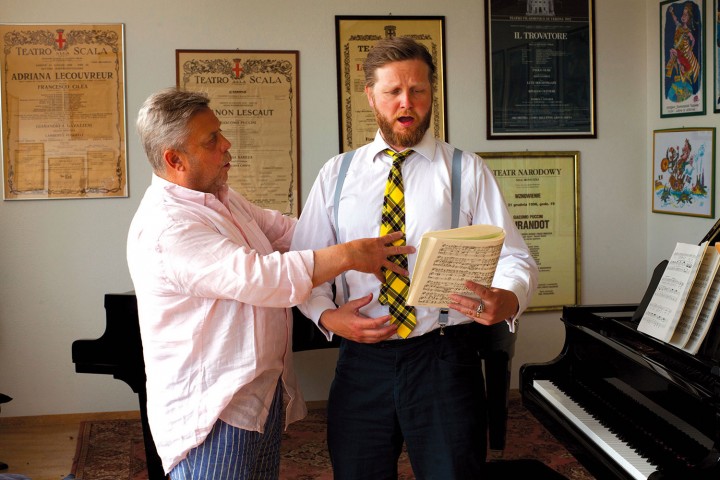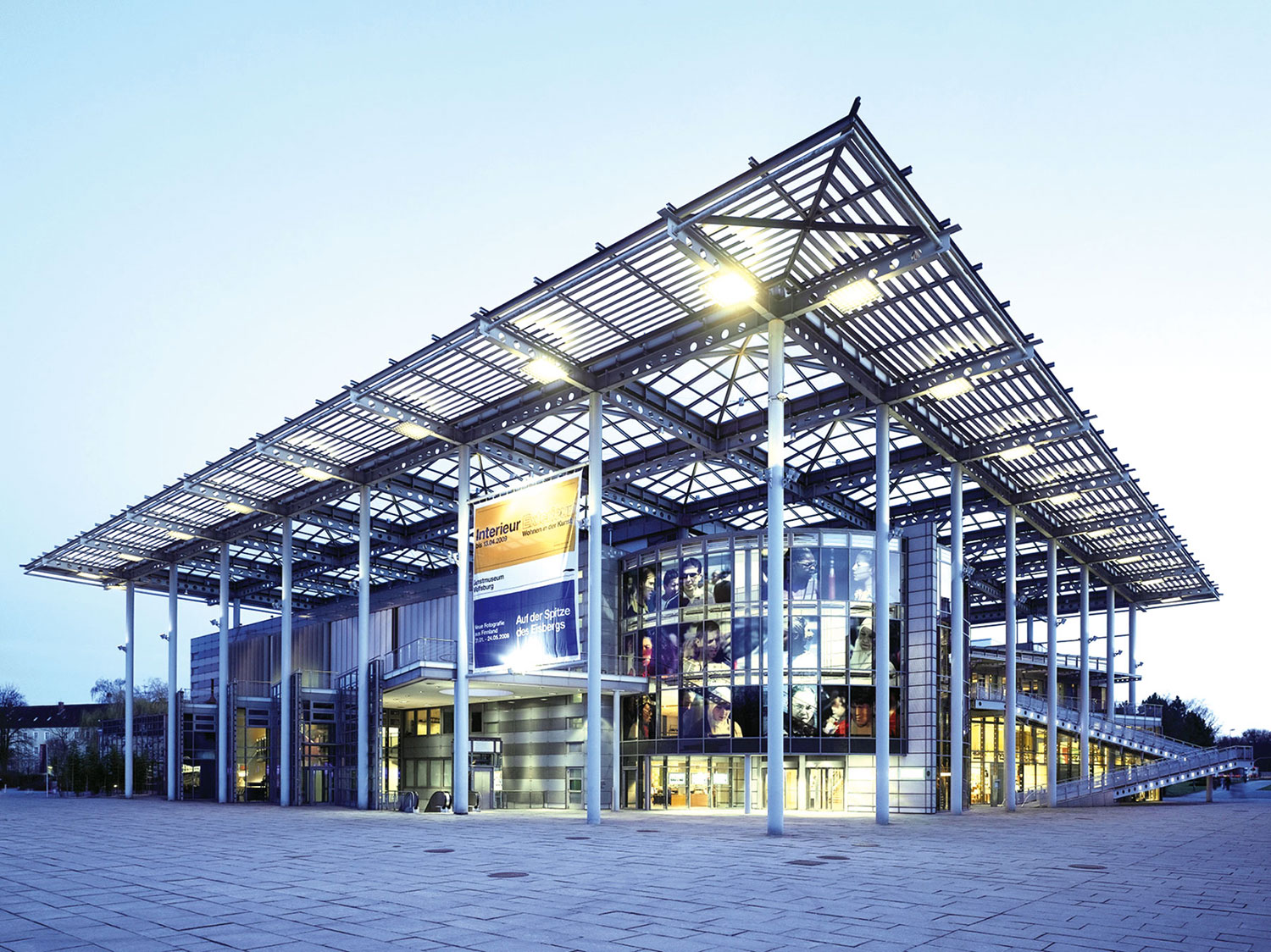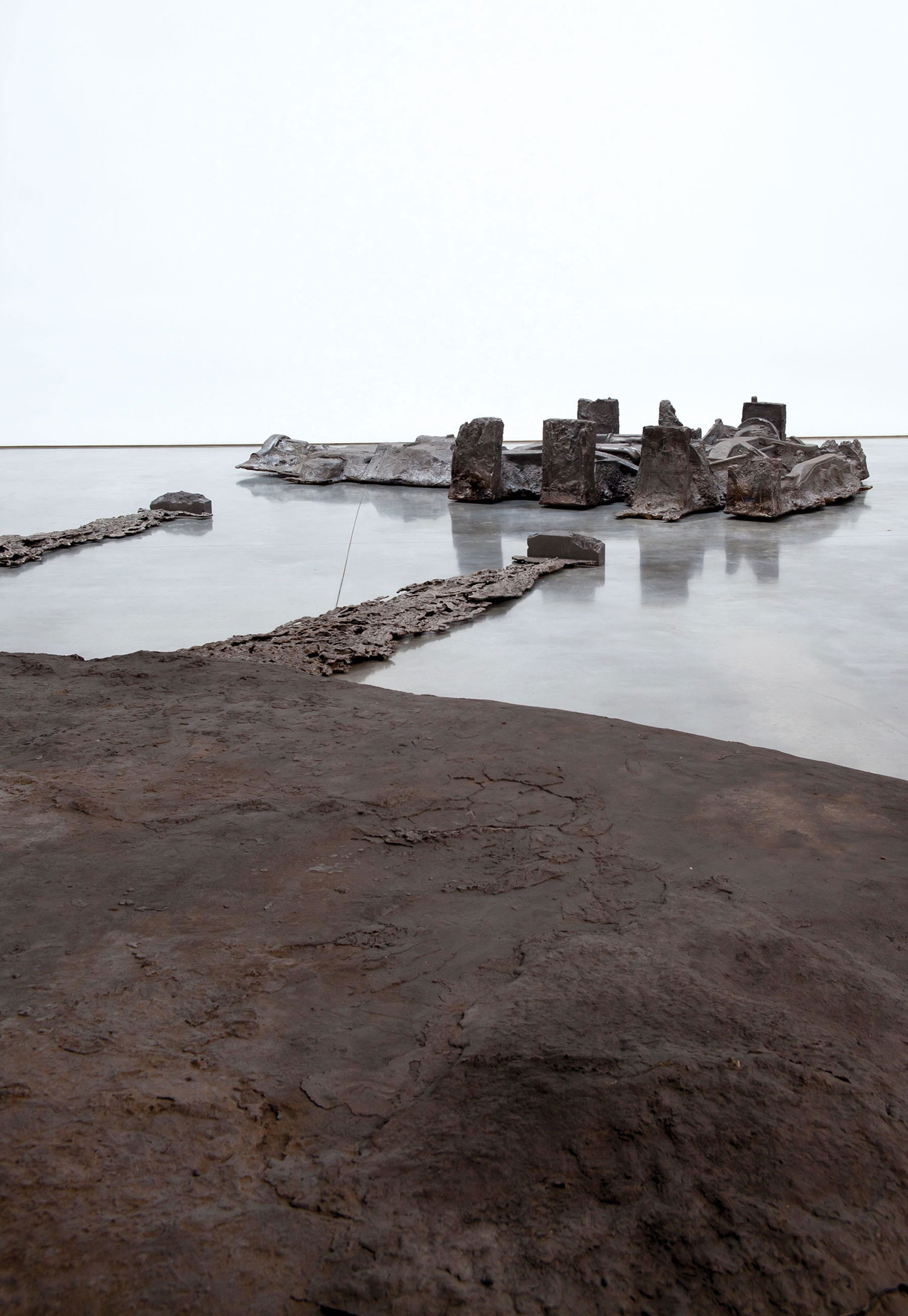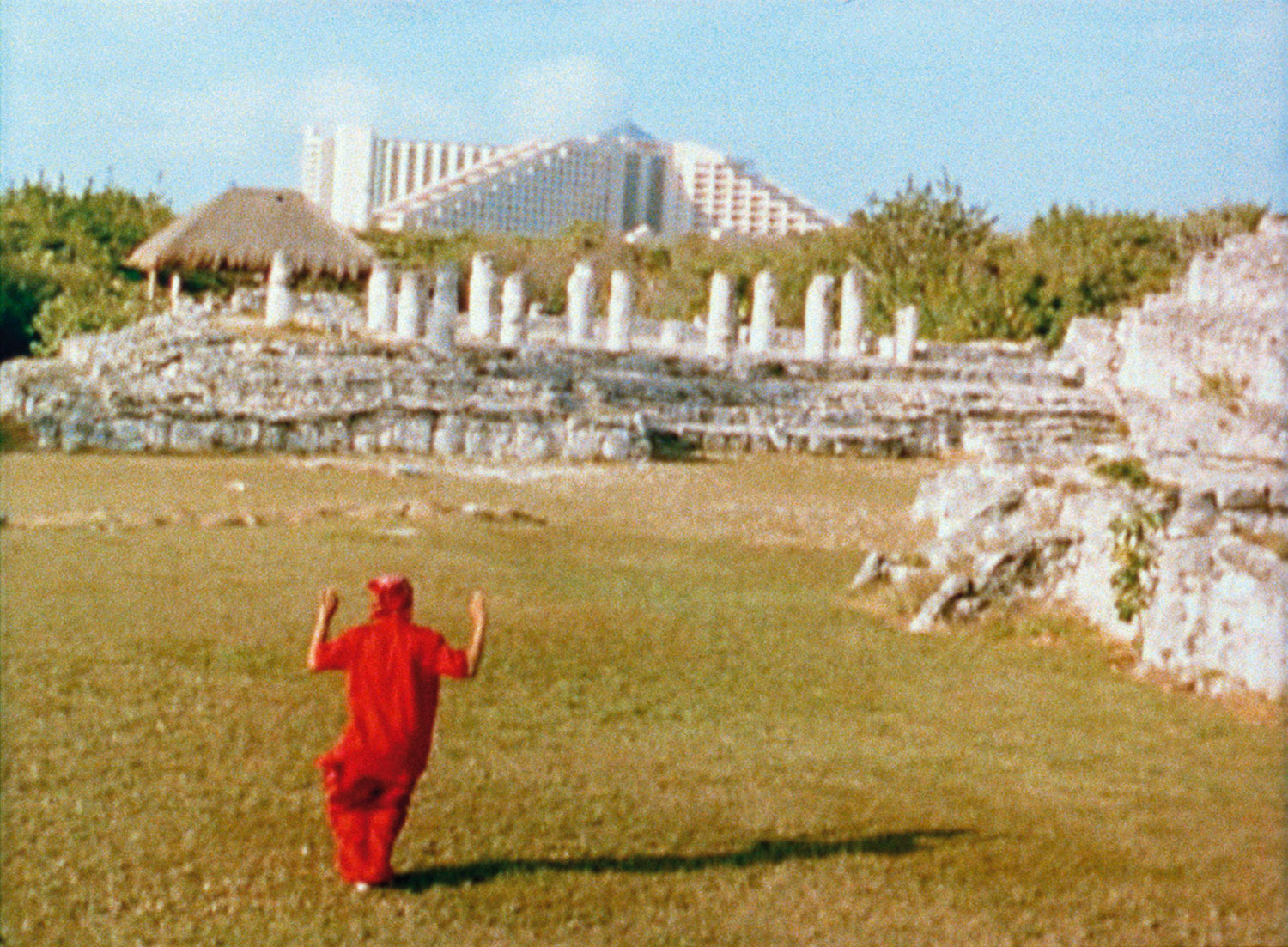
The final act of the opera The Marriage of Figaro (1786) culminates in a heartfelt reconciliation between the two main protagonists, who sing to each other while the other performers join them in a beautiful refrain. Considered by many to be the highlight of Mozart’s oeuvre, it is the moment chosen by artist Ragnar Kjartansson for his twelve-hour-long performance entitled Bliss. The three-minute aria will be repeated over the course of a whole day by professional singers, musicians and a conductor in a lush opera set as part of Performa11 in New York. To discuss the upcoming work, I visited Kjartansson at the Banff Centre, in Canada where he was supervising a residency program that he described as “a bit of a Chekhovian situation.”
Markús Þór Andrésson: Could you tell me why in your visual art practice you often refer to theater?
Ragnar Kjartansson: We call ourselves the “Constant Reality Theater,” the three artists directing this performative course. It sort of describes our motive, finding ourselves in a perpetual confrontation of art and life. Sometimes you need to add a little theater to life and vice versa — bring reality into art. Both give you an opportunity to scrutinize things up close and get an overview from a distance. In creating art this is an important attitude for me; it is not about discerning the difference between this and that, but rather to indulge in the fluidity of it all. I choose to immerse myself in a world of “make-believe.” Acting is such an interesting side of human expression: we pretend, and it affects others. I find it a very honest art form, because everyone knows it is not real, but we are ready to accept it as a manifestation of reality.
MÞA: Would you rather work as a theater director or an actor?
RK: Theater is a wonderful form in and of itself, but I approach it as a visual artist — in spite of my background in a family of actors and directors. Perhaps it is the good old Oedipal drive; I want to transform the nature of theater, destroy it while mastering it somehow at the same time. I want to rid it of its intrinsic qualities such as narrative and linear time and covert it into static sculpture. The building becomes a part of the whole experience, but most importantly the performed event becomes a site in and of itself. Repetition is an important factor in stressing this element, changing the linear into situational. I think that as an artist I can bring certain elements into theater or borrow theatrical elements for my work, but my point of reference will always be outside of it.
MÞA: Tell me about Bliss.
RK: The Abron Arts Center theater where we will do the performance is really nice, kind of old and full of history. It has carpets on the floor and comfortable chairs in the auditorium. It is the perfect setting for dozing off under the soothing repetition. So my work is actually quite far away from traditional theater. It is hard for me even to call it performance. It is more like a happening or a situation. We will have singers and musicians performing those three minutes of Mozart’s Figaro in an elaborate stage set. In fact the idea is to create the illusion of a whole opera where we are stuck in the finale. This is the part where the leading couple comes to terms and everybody is happy.

MÞA: What can you tell us about your choice of this particular opera — and the final chapter from it?
RK: When asked what he wanted to play at the audience before performing at the Hollywood Bowl, Liberace once said, “I’m going to play Tchaikovsky, but without the boring parts.” In a way that is exactly what we are doing in this work. Then again, the beauty of Mozart’s work is unrivaled, so I don’t think I do any disrespect in this decadent experiment of mine. I somehow want to deconstruct beauty. The nature of our desire for beauty may seem banal and pointless, but I choose the most beautiful music there is and repeat it constantly so as to fully engage in its intoxicating effect. It becomes a soothing mantra, a shamanistic experience and a zone.
MÞA: When you graduated from the Icelandic Academy of the Arts in 2001, you created The Opera, where you performed for two weeks in a miniature Rococo stage set. Bliss marks the ten-year anniversary; can you elaborate on how your approach differs in those works?
RK: In art school I was thrilled to learn about the performance artists of the ’70s, all the hardcore mega-dramatic performers and their durational practice. First I thought they were so tough, but then I started thinking about them in the light of every other show business. It is poetic and beautiful, but it’s also just a cheap trick. In my work The Opera, I was babbling some nonsensical music and lyrics. It was just like anyone’s silly take on opera, but my whole focus was on the form. I stayed and performed in this set for the duration of the exhibition with a strict frame of routine, going from one act to the next, acting out operatic clichés. I remember, as much as I was trying to avoid any distinct music or language, that I would often sway towards the particular finale in Figaro, which has always been a favorite of mine. So, even though quite related, the first work was more about form; in Bliss it becomes more about content.
MÞA: What is it about The Marriage of Figaro and the final aria that makes you want to wallow in it for twelve hours straight?
RK: My choice of music is quite deliberate, because at the end of the day, I am not so invested in the formal question any longer. Having other performers working with me and on this scale is just an extension of my practice where you will often find duration and repetition. I could, for example, not do this work with Puccini’s “Nessun Dorma” on repeat, beautiful as it may be. Figaro as a whole is not of much interest to me. It all comes down to this particular finale both musically and in terms of its textual content. It is probably the most beautiful music ever written, a kind of an archetype of beauty. After a whole opera based on rather tedious Rococo frills and décor, the music becomes quite simple and lyrical. And the text suggests that forgiveness will make us free. It is a beautiful message. At the same time I find it quite ironic from the hand of the author.

MÞA: Irony is an element that we see many artists struggling with in contemporary art. Is this why you relate to Mozart, because he was conflicted by it as well?
RK: As for the narrative of Figaro, I am not sure you could say that it is characterized by irony. It is a basic story about love, betrayal and forgiveness. It has more to do with the subtle irony that I sense in all of Mozart’s work, relating to his late 18th-century zeitgeist and his position at the Viennese court. Here is this genius of a composer who has all the talent in his hands to create the most beautiful and sincere art, and yet he always complicates it with a skeptical undertone. I see it as his way of acknowledging the impossibility of sincere expression in any form; true beauty must be flawed and imperfect. It is somehow quite postmodern of him. Just look at what is happening in the opera. It is a typical self-referential artwork, about the theatrical form in itself, theater within theater. People are putting on acts on stage, disguising one character from another and reflecting the ongoing theater of everyday life. After a confusing back and forth between this married couple, with flirting, disguise and adultery, the husband speaks the kindest words to his wife because he thinks she is someone else. He finally asks his loved one for forgiveness, and she grants it to him because, as she claims, she is “kinder than he is.” Forgiveness, this beautiful and humble emotion, is set in a game of disguise and hierarchy, where one person comes out better than the rest.
MÞA: So you see this as an allegory for the challenges of sincere expression in art?
RK: Yes, but sincerity lies in the nature of the performance itself. I have always believed in performance and actually always understood all art as some kind of performative act where the artist sets some sort of imaginary conditions that lead to creation. This way irony and sincerity are destined to go hand in hand. Theater is helpful in analyzing this because there everything is fake. A painting in a domestic stage set, for example — that is the most beautiful thing. I think of all the work that I do, drawings and paintings, as props produced for an exhibition context. And being in the studio is like a constant performance; I always feel that I am playing a part. Now, when I am thinking about emotions and expression, staging it is important. Forgiveness and its inherent power play is very much at heart of what I am looking at in Bliss. How can it be that this wonderful example of kindness and empathy in human nature is also such an effective tool of manipulation? It is a very exciting dilemma to me. I need to go over it again and again within the fake framework of theater and see what it is really about. Part of it may be my Christian upbringing. My mother, for example, always talks about forgiveness “in the name of Christ.” That is to say, you forgive someone from your heart without necessarily expressing it to the person involved. I wonder if you can still escape the notion of superiority that I see entwined with forgiveness. Religion has been an important issue for me, a constant struggle without any conclusive answers. It is where I feel I can put emotional complexities and moral issues to the test, much like theater. I don’t think it is a coincidence that religion and theater are so related.
MÞA: “Bliss” is a term that you will find both in religion and the secular world.
RK: That is true. I often think of the sculpture by Bernini, where the holy figures are fixed in a perpetual state of ecstasy. You can also get this feeling when you see a great work of art, like leaving the real world for a while. Mozart’s libretto ends with all the performers singing overjoyed together — “we are all so happy” — and what they all just witnessed was a petty scam between lovers. Knowing that things are staged or fake doesn’t spoil your sincere feeling of bliss.





